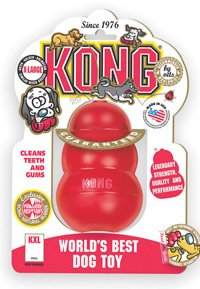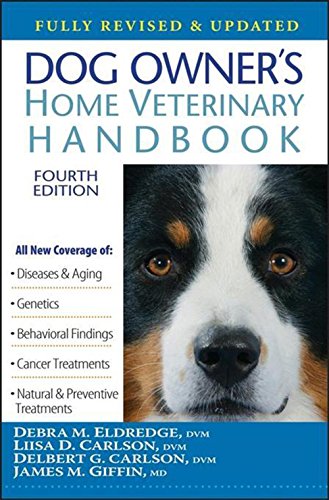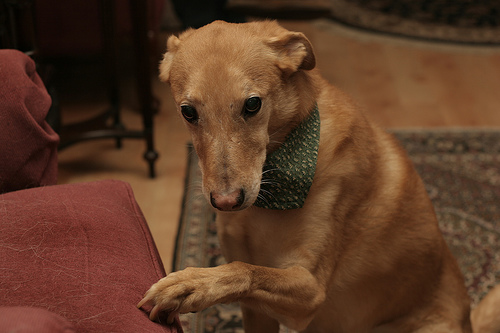
In this one-on-one interview, Dr. Cathy Alinovi, co-author of DINNER PAWsible and owner of Hoofstock Veterinary Service, discusses with me a highly contagious disease - canine parvovirus.
 Credit: Image provided by Dr. Cathy Alinovi and used with permission, all rights reserved
Credit: Image provided by Dr. Cathy Alinovi and used with permission, all rights reservedDonna Cosmato: What is canine parvovirus?
Dr. Cathy: Canine parvovirus is a virus that targets rapidly dividing cells, mostly affecting the gastrointestinal tract with the heart and brain and cells of baby puppies commonly affected. Parvovirus invades the intestinal cells, completely destroying the intestinal lining. Parvovirus is hardy in the environment and causes much concern in shelter settings due to viral persistence as well as susceptibility of animals upon entering the shelter. Parvovirus is present in all environments unless disinfection is applied regularly.
DC: How many types of virus are there?
Dr. Cathy: Nearly all mammal species have their own parvovirus, but each is specific for the animal species it can infect. The canine parvovirus is capable of affecting dogs, wolves, coyotes, foxes and more members of the dog family.
There are two types of parvovirus affecting dogs : CPV 1 and CPV 2, which was originally identified as canine specific and has now been further divided into CPV-2a, 2b and 2c based on host range and incubation periods. The most common form, CPV-2b, which most adult dogs have been exposed to means they have some immunity no matter vaccination status. The more recently discovered CPV-2c discovered in 2000 was found to be more virulent but is covered in current vaccines.
DC: What is the difference between parvovirus and distemper virus in dogs?
Dr. Cathy: Both viral diseases are capable of causing acute small intestinal disease in dogs. Parvovirus is almost exclusively seen in younger dogs and puppies. Canine parvovirus is hardier in the environment compared to distemper due to the structure of the viral particles. Distemper typically starts as a respiratory infection, with eye and nasal discharge as well a fever and poor appetite. Coughing and pneumonia can develop then shortly after.

DC: Which one affects dogs most often in your experience with your practice?
Dr. Cathy: Clinically, in the veterinary office, we see more cases of parvovirus infections than distemper. Mild cases of distemper are not well recognized as distemper due to poor in-office testing. Whereas, easy in-office testing for parvo infection makes it diagnosed much more often than distemper.
DC: Are there dog populations that are at higher risk of contracting the infection?
Dr. Cathy: Doberman pinschers, Rottweilers, and Pit Bull Terriers are at a higher risk for contracting parvovirus due to a suspected inherited immunodeficiency that has yet to be proven. However, another theory is these dogs are overbred and under protected against parvovirus, thus are targeted more often by the virus.
DC: What are the symptoms of parvovirus in dogs?
Dr. Cathy: Following exposure to parvovirus, what happens depends on several factors:
Illness is often seen one week following exposure to parvovirus. Shedding of the virus by infected dogs can begin several days before the dogs show signs of being sick and may last for two weeks following recovery.
Intestinal disease occurs after viral invasion and replication within intestinal cells; poor absorption and a secretory diarrhea results following intestinal cell destruction. Intestinal bacteria can move from the intestines into the blood stream and result in sepsis (bacteria in the blood stream).
Vomiting is often the initial sign of parvovirus, followed by diarrhea, lack of appetite and lethargy. Many adult dogs are exposed and infected with parvovirus but never show signs while puppies can suddenly die if initial clinical signs go unnoticed.
DC: How do you, as a vet, diagnosis parvovirus?
Dr. Cathy: I diagnose parvo infection based on a combination of clinical signs, signalment (age/breed), vaccination and exposure history, and test results such as positive snap test(ELISA) for fecal shedding of viral antigen.
Parvovirus could be a possible diagnosis for any dog with vomiting or diarrhea. Many times, I will also perform a complete blood count on parvo suspects – if the total number of white blood cells (the ones that fight infection) is really low – it’s a very bad sign.
DC: What is the treatment for parvovirus in dogs?
Dr. Cathy: Supportive care is the most important thing: fluids and make the vomiting stop. Fluids are given to replace what is lost from diarrhea and vomiting, and make the vomiting stop because that is often what kills. Many other medications are difficult to administer while the dog is vomiting – anything that can be given can’t be oral – needs to be in the vein – which is why parvo dogs often do better in the hospital.
DC: Is parvovirus fatal?
Dr. Cathy: Parvovirus can be deadly; without supportive care approximately 50% will die. With supportive care, 80% of parvo puppies can survive.
DC: What secondary health problems can be caused by parvovirus?
Dr. Cathy: There are two major side effects of parvoviral infection: myocardial (heart) disease, and chronic intestinal issues – potentially even inflammatory bowel disease. In cases of myocarditis (inflammation of the heart), scar tissue forms in the heart muscle due to parvo virus infection.
In some cases, a young puppy will suddenly die, with no warning or anything. In some cases, the dog will survive to adulthood but may have residual heart issues. It’s possible no one knows there are heart issues until the dog is now an older adult and has heart disease. Some homeopathic veterinarians think there is a link between the rise in heart disease and the discovery of parvovirus in the 1970s.
As for intestinal disease, because the intestines have been terribly inflamed from infection with parvovirus, there can be residual effects.
I have had one patient, who, after he recovered from parvo infection, developed intussusception – where the intestines telescope over themselves and cause a blockage. In this dog’s case, it was fatal as the scar tissue was too great. I have had many clients in the office whose dog’s intestines are all inflamed and the parent told me their dog had parvo as a pup. Logically, intestines that have been brutalized by parvo may be predisposed to other intestinal ailments.
DC: Does parvovirus affect puppies differently than it does adult dogs?
Dr. Cathy: Yes, adult dogs are less severely affected than puppies but vomiting and diarrhea are still seen in adults. The infection can be less serious due to prior exposure and some immunity; these dogs typically have a brief period of vomiting and diarrhea with less serious effects.
DC: Are there any natural treatments for it?
Dr. Cathy: The key to treat parvoviral infection is to make the vomiting stop and rehydrate the pet. Each of the branches of alternative medicine have a treatment for parvo that can be quite effective in the hands of an experienced practitioner. A homeopath might use Baptisia, an acupuncturist could needle ST36 and GV1 as a minimum, whereas an herbalist might use coptis rectally.
There are other treatments available such as colostrum and stem cells amongst others. Again, in the hands of an experienced practitioner, natural treatments can save puppies from parvoviral infection, if the vomiting will stop and the dog can be rehydrated.
DC: What about the canine parvovirus vaccine? Is it safe?
Dr. Cathy: Ah – the pros and cons of vaccinating. In my experience, 98% of my patients who have died from parvo infection were not vaccinated against the disease. The ones that got better were partially vaccinated or fully vaccinated, thus had less severe illness.
When used properly (see next paragraph), there are few side effects from the vaccine. Reports in the literature are that combination vaccines cause more reactions than single dose shots so, the parvo/distemper combo vaccine has more side effects than vaccinating separately for parvo, distemper, hepatitis, etc. Again, in my experience, I find the combinations with the lepto vaccine are more likely to cause a reaction than the combos without lepto.
Now, let’s talk about over-vaccinating. I’ve seen cases where breeders start giving vaccines at 4 weeks of age, then booster every 2 weeks!! Wow! Their idea is right – to protect the pups, but this is overkill – and over-vaccinating can kill and can seriously increase the risk of cancer down the road. See the next section to talk about generally safe guidelines on vaccinating against parvo disease.
DC: Is there a recommended parvovirus vaccination schedule?
Dr. Cathy: Puppies receive immunity through colostrum (their mother’s milk) on the first day of life; thus, protection against parvovirus is transferred to the pups in the milk. This protection slowly fades over 16 weeks. If antibodies (the protective factor in the colostrum) are present at the time of vaccination, the antibodies inactivate the vaccine as if it were a real infection.
There is a period of about a week where maternal immunity is ineffective against true parvovirus but is still effective in destroying the vaccine and following this period, the vaccine can then be effective. This one week is different in each dog. Therefore, the biggest problem is that the age at which vaccination becomes effective is not the same for each puppy, so vaccination is given every 3-4 weeks until 17 weeks of age.
Adult dogs can be vaccinated for parvovirus every three years following puppy vaccinations, according to the label on some vaccines. However, there is good evidence that once a dog has been vaccinated at 17 weeks old, immunity against parvovirus can be present at least 6 years into the future. This is a great topic to discuss with your vet so your pup is protected but not over-vaccinated.
Once a puppy has recovered, it is expected to have lifelong strong immunity, but this has yet to be proven.
DC: Besides the vaccination, are there other preventive measures I should take to protect my pet?
Dr. Cathy: Exposure is not always controllable with a virus that can be found in any environment, but by keeping your puppy in a clean environment and using well-timed vaccination, odds are a lot better to protect your puppy.
Here are some fun facts to know to help protect your puppy:
DC: What else do you want to tell pet parents about parvovirus in dogs?
Dr. Cathy: Public outdoor areas where canine fecal matter is present should be avoided until vaccination is completed. This is especially true in cases of weak or immune challenged dogs.
The information in this article is drawn from an email interview with Dr. Alinovi on June 28, 2012, and is presented for educational purposes only.
 Beware of the dangers of Infections caused by Grass Seeds in our Pets
The real Dangers of Grass Seeds Is Y
Beware of the dangers of Infections caused by Grass Seeds in our Pets
The real Dangers of Grass Seeds Is Y
 Choosing the best dog toys for your dog or puppy
Choosing the Best Dog Toys - Plus Our Favorites!
Choosing t
Choosing the best dog toys for your dog or puppy
Choosing the Best Dog Toys - Plus Our Favorites!
Choosing t
 The Five Most Common Dog Diseases including Ringworm and Mange
Bone Problems in a Dog
Credit: Wikime
The Five Most Common Dog Diseases including Ringworm and Mange
Bone Problems in a Dog
Credit: Wikime
 Redecorating For Your Dog- How To Make Your Home More Dog Friendly
How To Make Your Home More Dog Friendly
I know that I would
Redecorating For Your Dog- How To Make Your Home More Dog Friendly
How To Make Your Home More Dog Friendly
I know that I would
 Dog Tricks – Dog Training Level 2
Dog Tricks – Dog Training Le
Dog Tricks – Dog Training Level 2
Dog Tricks – Dog Training Le
Copyright © 2005-2016 Pet Information All Rights Reserved
Contact us: www162date@outlook.com